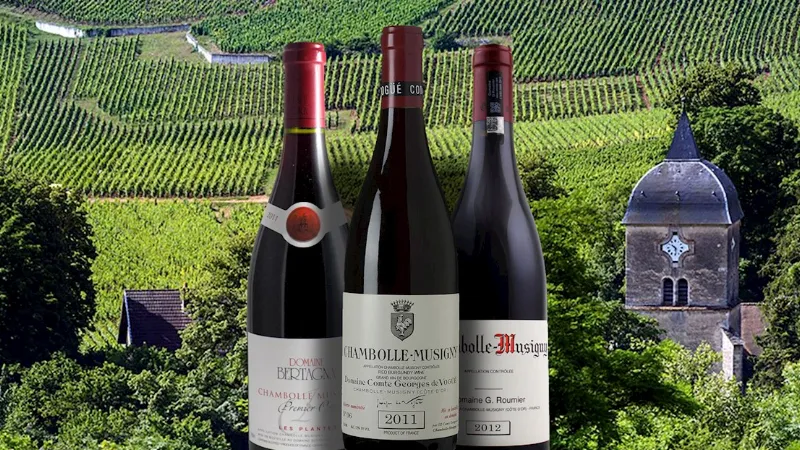What is burgundy wine? Many industry experts believe that Pinot Noir and Chardonnay are at their best in Burgundy wine.
Please read on for more detailed information.
Table of Contents
What is Burgundy Wine?
Many business experts believe that Burgundy wine represents the pinnacle of Pinot Noir and Chardonnay. Although Bourgogne Aligoté is an AOC, the region also produces white wines using the Aligoté grape variety, though their share of the total production is not particularly high. However, there are some outstanding Aligoté wines that are well worth seeking out. In terms of red wines, Pinot Noir rules the scene, but Gamay thrives in Beaujolais, to the south of the region (some maps include it as part of Burgundy, while others have it on its own). However, benchmark Pinot Noir and Chardonnay are only grown in Burgundy proper, which extends from Chablis in the north through the Côte d’Or and south to the Mâconnais.

Where Does Burgundy Wine Come From?
A sizable portion of central and eastern France is covered by the Burgundy wine region. It encompasses Chablis in the north near the city of Auxerre; the Burgundian heartland regions of the Côte de Nuits and Côte de Beaune near Dijon and Beaune; the Côte Chalonnaise further south around Chalon-sur-Sâone and the Mâconnais, near the town of Mâcon in the very south, almost level with Switzerland and not far from the Jura, and neighboring the Beaujolais.
Chablis Classification System
Petit Chablis: a wine that is made from grapes that are grown nearby the village and have a higher acidity and a strong light citrus character. So look for recent vintages; these are great when consumed young.
Chablis: The grapes used to make these wines come from the limestone slopes close to the village of Chablis, making them a little rounder and more minerally. This category includes the majority of the wines that we can find locally.
Premier Cru Chablis: These wines, which make up only about 15% of the total annual production, are more complex and elegant because they are grown in vineyards with Kimmeridgian limestone marl, which gives them a unique character. Look for climate names on the label like “Mont de Milieu” (“Mount in the middle”), “Côte de Léchet” (really zesty), or “Fourchaume” (fruity).
Grand Cru Chablis: The steep slopes that face south-southwest are where these vineyards are situated, in a lovely arc to the north of Chablis. There is technically only one Grand Cru, but there are 7 “climats” inside that Blanchot, Bougros, Les Clos, Grenouilles, Presuses, Valmur, and Vaudésir will all be labeled as Grand Cru and their names will appear on the bottle. The majority of the Grand Cru wines in Chablis are aged in oak, which can cause them to taste different from the other Chablis wines. The Grand Cru vineyards create wines that age beautifully, with floral honey notes and a crisp flinty acidity.

Why the Wine is So Expensive?
Unless we are discussing the heartland village appellations and producers in the Côte d’Or (the Côte de Nuits and Côte de Beaune) as well as specific producers in Chablis and the Côte Chalonnaise, Burgundian wine is not expensive. These situations involve a variety of variables.
History, fashionability, and reputation are all factors in the first. The exceptional history and pedigree of some wines and producers, combined with their high demand and exorbitant prices, make them particularly sought-after.
The second is a problem of supply and demand that is made worse by dwindling land holdings. Individual vineyards in the Côte d’Or are further divided into plots and rows held by families or producers, and with each succeeding generation, these holdings are further divided to the offspring. For instance, the Clos de Vougeot’s single vineyard, despite being a sizable site, is shared among about 80 different producers.
As a result, even a few rows of vines from a desirable location won’t yield a lot of wine (especially if the producer will chase quality by limiting yield). Prices will increase if a trendy or well-known producer is added.
It is important to keep in mind that great wines (and great values) can be found throughout the region. Interesting wines from single vineyards are not just found in the Côte d’Or. However, further investigation may be necessary.

Must-try Villages – Red Burgundy
Vosne-Romanee
One of the three most recognizable red Burgundy villages is Vosne-Romanee, home to some of the most renowned top-tier vineyards in the world, including Romanée-Conti and La Tâche. Its typical style is frequently described as being full of opulent fruit and sexy while combining elegance and power. Its Village wines frequently showcase these traits.
Gevrey-Chambertin
Nine Grand Crus are located in Gevrey-Chambertin, another well-known village. It has more structure and power than other Burgundy reds, a firmer mouthfeel, and silky tannin. It is sometimes referred to as a manly wine.
Chambolle-Musigny
Chambolle-Musigny is the last of the “big 3” villages. Relative to the “masculine” It has a soft, elegant, and feminine aesthetic, much like Gevrey-Chambertin. Its exquisite floral and red fruit aromas, combined with the smooth tannins, perfectly capture the allure of gentleness and make it hard to resist.

Must-try Villages – White Burgundy
Puligny-Montrachet & Chassagne-Montrachet
The two neighboring villages of Puligny-Montrachet and Chassagne-Montrachet are regarded as the pinnacle expressions of white Burgundy and share some of the world’s best Chardonnay vineyards. In general, Chassagne-Montrachet is richer, fuller, and more fruit-forward than Puligny-Montrachet, which is more delicate and elegant with a lovely bouquet and minerality. Of course, the terroir of each vineyard and the winemaking methods used by each producer can produce wines with distinctly different styles.
Meursault
In the world of white Burgundy, Meursault is well-known. It has some excellent Premier Cru and Village wines but no Grand Cru. Richer and fuller in body, it frequently exhibits notes of butter and almonds along with citrus and minerality.
Summary: What is Burgundy Wine?
For the better part of a millennium, Burgundy has set the benchmark for the production of Pinot Noir and Chardonnay. Even today, the best Burgundy wines are among the rarest and most expensive in the world.






